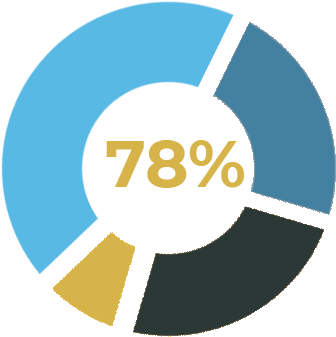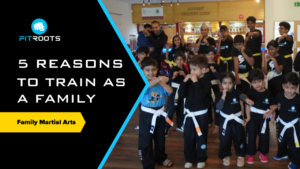Just like anything new, you’ll want to know the cost of Martial Arts before signing up.
When you are thinking about joining a Martial Arts School, you want to make sure there is a solid syllabus available. But you also want to make sure you are making the right decision financially too, and are wondering exactly how much Martial Arts costs.
We come across parents and Martial Arts students all the time, who wish they took a deeper look into how money affected the level of service they received.
What Factors Effect How Much Martial Arts Costs?
You might be thinking that Martial Arts is Martial Arts, no matter how much it costs. Whilst this is generally true, there are a few main factors to consider, which impact the quality of teaching, such as:
• Student to Instructor Ratios
• Facility and Class Availability/Timetable
• Depth of Syllabus
• Student Support
• Instructor Development
In this blog, we will explore exactly how each of these factors influence your learning and development in your Martial Arts journey. And most importantly, how they will affect the cost of Martial Arts.
A key thing to understand is that Martial Arts (unlike most other clubs, societies etc.) does not have a universal governing body, which oversees right from wrong. And it certainly does not have any effect on how much schools charge their students.
What Does The Typical Martial Arts Programme Cost?
Martial Arts is not an industry of norms. When considering how much Martial Arts costs, you must consider you are looking for a full time school or for someone who is teaching as a hobby.
Instructors tend to run their Martial Arts Schools however they like, and this gives you, a wide range to choose from.
On the lower end of the spectrum, memberships start at £20/month.
And on the higher end, memberships can go into the £100’s/month and beyond.
It seems strange to have such a broad range, but below, you will see why some are able to charge less, and why others charge more.
In simple terms, it’s a numbers game.
If you have 300 students on £20/month, it’s hard to personalise the programme, and give attention to every student.
When you have 100 students on £100/month, you can afford to give each individual more time, attention, and focus.
For you, as the prospective student, it depends where you want to sit on that scale.
If you want a more focused and dedicated teaching process, be prepared to invest more.
Maybe you’re happy to receive less individualised teaching. If so, then you can save some money.
Below, we will explore how each factor directly relates to the amount you will pay to learn Martial Arts.
1 – Student to Instructor Ratios
In most Martial Arts Schools, it is common practice to have one instructor. This is regardless of how many students are in a class. There is no requirement (apart from standard Health and Safety law), to have a set ratio of student to instructor.
Some Martial Arts Schools get around the student to instructor ratio problem, by having junior/kid students (sometimes called Assistant Instructors) teach less experienced students.
This can be useful for the Assistant Instructors to develop their teaching skills. But it can lead to inexperienced students potentially picking up bad habits, if techniques and principles are taught incorrectly. It is sometimes used as a cost saving strategy, but not always.
How Does The Number of Students Effect Cost?
Naturally, when there are more students per instructor, it will be likely that you pay less for your Martial Arts classes and membership. However, this is not always the case. Especially if the Martial Arts School has a good reputation, and the quality of their programmes and syllabus mean that more people want to train there.
If this is the case, they will normally have a good cohort of students, an inviting atmosphere, and a culture centered around learning.
This is exactly why judging whether or not a Martial Arts School is good, based on student to instructor ratios is not always the best metric. But it can give you a good indication, if you know what to look for.
The more important thing for you to note, observe, and understand as a prospective parent or student, is whether or not, you will receive the right dose of attention, care, and focus that you need.
One of the main questions we receive is, “How many students and instructors are there in a class?”.
You can see more questions we receive like this in our FAQs here.
To understand more, break your question down into the following:
• Which age group are the classes?
• What ability level are the classes?
• Is there a specific aim of the class?
Which age group are the classes?
The general rule here is that the younger the age group, the more attention they need.
It follows that more attention equals more instructors. More instructors equals higher overheads. And more overheads equals a higher cost to you, the student.
For example, in a Parent – Toddler programme, which is typically aimed at 2 – 3 year olds, the average student at that age can be quite a handful. They would require more continuous attention than older children need. For this age group, you should expect to see a minimum of two highly qualified and experienced instructors on hand, for a full class of students.
What ability level are the classes?
For children or for adults, the ability level of the class matters a lot. If you are inexperienced, you may feel overwhelmed going into a class full of advanced students.
Most Martial Arts Schools will not have split ability level classes. However, it is considered good practice to make sure that students are partnered up with other students of a similar ability, weight, and sometimes age.
Mixed ability classes can reduce your membership costs (as you don’t need separate classes for differing abilities), but it is not always the case.
Is there a specific aim of the class?
If you sign yourself or your child up to a hardcore Martial Arts School, for your first ever time trying Martial Arts, the likelihood is that you will be put off it for good. On the other hand, if the class is too easy, you will think this is not what you need.
Here, you need to understand what the actual aim and intention of the class is. If the class can successfully cater for mixed abilities, then it will tend to be a good fit for you.
However, if for example, the students are professional fighters, that only fits one demographic, fighters!
Well structured, planned, and devised classes with a good aim and intention will generally cost more. If everyone just has to turn up (instructors included), then it will likely be cheaper.
Tip
First, try to understand what you want to learn from Martial Arts, and why you want to learn, then finding the right class will become much easier.
You might think the cost of Martial Arts is most important. But, if you aren’t getting what you want out of a cheap membership, you may be wasting your money.
Remember, your aims and intentions will change as you go through your Martial Arts journey. The key is to have a staged path of progression, so that you never stop learning.
If you do not want that much attention and focus on improving in Martial Arts, you may be ok with a higher student to instructor ratio.
Hence, a cheaper Martial Arts School may be better for you. If not, and you want more attention to detail, then generally, you can expect to pay more.
2 – Facility and Class Availability/Timetable
The cost of Martial Arts will vary greatly depending on whether your instructor is teaching as a hobby, or you are part of a full time school.
When it comes to the facility and class timetable, there is a huge range of options, and the one that may work for you can depend on a number of factors.
We see the most common factors being location, flexibility, and set up.
Here, we will address them one by one. Then you will understand how most Martial Arts Schools structure their facility and timetable.
Location
Nowadays, there seems to be a Martial Arts School on every corner, so it can be hard to choose which is the best one for you.
If you live in a built-up town like where we are in Slough, you will have plenty of options.
The key thing to stress here is not to just choose the ‘school next door’ just because of convenience.
Although tempting, your choice should be made based on all of the other factors discussed in this blog.
It is common for the cost of Martial Arts Schools in a more densely populated area to be more. This is mostly due to higher overheads, particularly for paying rent for the hall, studio, or Dojo (Martial Arts practice area).
In towns and cities, you will also find an array of different Martial Arts styles and offerings, so you may be spoilt for choice.
For Martial Arts Schools, having other ones so close by, can either make or break them. It can often force them to up their customer service and offering, so you, the student, receive a better experience.
Facility
Where are the classes held?
This seems like a simple question. But some Martial Arts classes may require specialist matting, equipment, and other setups.
Most Martial Arts Schools operate from schools, church halls, community centres etc.
Although there are some which have their own facility, which is kitted out with Martial Arts and other gym equipment.
The main factor to consider here is floor space. You would not want to be cramped with little space to move around.
Facility hire is one of the biggest expenses for a Martial Arts School.
It can be hard to get the right space for the right money. A typical full-time school (in Slough) will likely spend upwards of £1,000/month on rent, and when the Martial Arts School has their own facility, it can easily be more than £3,000/month on rent.
With it being at least three times as expensive to have your own facility, many opt for renting out public facilities.
Expect the cost of Martial Arts to be considerably more if you are looking for a purpose-built facility to train in. You can expect to pay more in membership fees as a result.
Timetable
Does the Martial Arts School you are looking to join have a full timetable?
That is spread across multiple days in the week? If so, you are looking at a ‘full-time school’ (which is what some in the Martial Arts industry call it).
On the other hand, does the Martial Art School you are looking to join have a random timetable, dotted through the week? Then, this school may simply be a ‘part-time school’. Or they just like having a few classes a week, which is sometimes dubbed as a ‘hobby school’.
The full-time schools tend to have more support, resources, and development for you outside of the class. Whereas the part-time schools tend to focus on just the class time to be the focus of learning.
Neither is right or wrong, it is a matter of what you prefer.
Generally, many who have practiced Martial Arts before are used to turning up to classes, and then going home. Where the next class is the next time they learn again.
Today, students tend to want more. That is more help, more resources, and more time outside of class.
Extra help, resources, and time come at an extra cost. Hence, this is where the full-time schools will be more expensive.
Flexibility
In modern times, people like you have busy lives. You want things now, and you want to get access to them fast.
It is no surprise therefore, that we have seen an increase in requests for flexibility. That’s in memberships, class availability, and the like.
More and more people like you, want to know that if you miss a class, there will be another time in the week that you can come instead.
The general thing to look for here, is that if there is a limited timetable, there will be limited flexibility. Broader timetables do give you an option to attend different classes. But they tend to be more expensive memberships for that ease of use.
Tip
By now, you may know what kind of Martial Arts School you are looking for. If you are set on your training days, then you can afford to have a limited timetable. You won’t need to worry about the flexibility.
If you would prefer a better facility, equipment, and flexibility, then be prepared to invest a little more.
3 – Depth of Syllabus
This refers to quality, and the more structured and built out your learning path the greater the associated cost of Martial Arts training. Ask yourself…
How much of Martial Arts do you want to learn?
Are you satisfied with just learning how to kick and punch?
Or, do you want more?
Do you want to learn about the Philosophy, Psychology, and Biology related to Martial Arts too?
This is what is meant by the ‘depth of syllabus’.
How Does The Syllabus Depth Affect Martial Arts Cost?
Physical Martial Arts, Mental, Or Both?
Many new students see the flashy side of Martial Arts.
You might want to become quickly accustomed to just the physical side. But, if you want a deeper understanding and want to see how you can apply it to your day to day life, you may want a more far-reaching syllabus.
More depth requires more time, patience, and investment from the Martial Arts School, and you, the student.
An in-depth syllabus can demand more in membership fees, as there is a progressive learning path available.
A syllabus focused on just physical skill development is easier to come by. Naturally, there is more competition within Martial Arts Schools to compete on price, instead of value and service to their students. These kinds of schools tend to charge less.
This blog is not going to cover which kind of syllabus is better. That will be best kept for another day.
Should I pay more for a deeper syllabus?
That is entirely up to you.
This comes down to your perception of Martial Arts, and how you want it to shape your life.
You might just be looking for a fitness activity, or to learn how to defend yourself. If that is you, then you might get frustrated at a place that delivers theory instead of just pure physical.
For the thinkers out there, you will want the physical and mental development. If you went to a standard Martial Arts School, you may get bored of classes quickly, if all you do is kick and punch.
Tip 
Pay for what you want.
If you want a deeper syllabus, expect to pay more. But also expect that it will require more from you. With this, you will see an improvement in your dedication, discipline, effort and so on, inside and outside of class.
If you are happy with turning up to class, with that being your only lessons and development with Martial Arts, then choose the physical only based classes.
4 – Student Support
What support do you need from a Martial Arts School?
And, how does this effect how much you pay?
The level of support you want will affect the cost of your Martial Arts training.
Well, it all goes back to what you want to learn.
Do you want more one-to-one support? Just like having 1-1 tuition rather than classroom teaching . If you do, expect to pay more.
Happy with group support, or even no support outside of class? If so, you probably will not need to pay any more.
Student support can come in many forms, namely:
- Martial Arts Skill Development
- Theoretical Development
- Accountability
Below, we will address them briefly one by one. For all of them, you can assume that said student support is being given outside of class times.
Martial Arts Skill Development
This is closely tied to the points around student to instructor ratios. But with a focus on what happens when your instructor is not around, and you want to practice your techniques.
Do you want to practice outside of classes?
If so, you might benefit from extra resources like technique demonstrations. And believe it or not, with the massive amounts of content on the internet, easy to use technique videos are hard to come by.
Theoretical Development
You might have the physical side figured out (or are halfway there). But now you want to get to grips with the Philosophy, Psychology, and Biology behind Martial Arts.
If you want access to these kind of resources, and support to help you understand it, be prepared to invest some more time.
These subjects are not easy to wrap your head around (but each age and/or ability group should have specific content). So, you might need some help.
The bad news is that most Martial Arts Schools do not offer this. So you will not have to even wonder whether or not you will learn it.
But if you decide to source a school which does, you might be lucky. This is not normally charged as separate content, but is just compiled together with any other resources they have available.
Accountability
So, you might have all the resources you need at this point, but will you actually use them?
Are you the kind of person who gets on with things once you know what to do?
Or are you the type who needs a helping hand, even if you know exactly what steps to take?
Change is hard, especially in modern times with many distractions.
Do you want your instructor, and/or team members from your new Martial Arts School to help you along the way? To be there to help keep you accountable?
If so, it will take them time to set you up, check in with you, and provide you with the relevant resources along the way.
Tip 
The real question here is, how do you want to learn Martial Arts?
If the answer is, ‘the best way’, then be prepared to invest more time, and more money.
Or maybe you are not fussed, and you think the extra student support is not useful to you, then simply take your pick from the abundance of Martial Arts Schools in your area.
5 – Instructor Development
The quality of your instructor’s continued training and development will be factored into your cost of Martial Arts.
Just like you will be focused on learning something new, or getting better at Martial Arts, do you think it is important for your instructor to do the same?
The answer is (hopefully) a resounding yes!
One day, when you get to be a great student, and become one of the advanced pupils in the class, you want to still be challenged every time you go to class.
Martial Arts Learning And Teaching Culture
To have a strong culture of learning in place, it must come from the top down. All of the instructors need to be focused on learning, just as much as you are.
Even if they are just a few steps ahead, the instructors should always be leading from the front. They should be ready to impart new knowledge and experience to their students in every interaction they have.
Any good Martial Arts School will have this mentality instilled within their culture from the start. From the very first day you walk in, you should know you have found the right place to learn.
Although the instructor’s learning should not cost you (directly), when the standards are higher, then you can expect that the fees will be higher too.
If you are satisfied that the instructor you will be learning from, knows all that there is to know about Martial Arts, then maybe you do not have to worry about what learning they partake in during their own time.
But, the likelihood of this all-knowing instructor existing is next to zero. You must be careful who you learn from.
Should my learning be restricted to the main instructor?
Many new students wonder if the ‘celebrity’ or main instructor is the only person they should learn from. The simple answer here is that all of the Instructor Team should be trained to have the same standards in teaching.
Of course, each instructor may have their own specialties, and their own ways of explaining concepts. But there should be a shared sense of teaching from the same methodology.
This will ensure that students avoid confusion when they are practicing under different instructors.
Again, this will not be a direct cost to you, the student. But you can expect an Instructor Team that displays this mentality of a unified teaching method, to be more organised, and diligent in their Instructor Training Programmes.
Tip 
Find a Martial Arts School where the teaching methodology is consistent through all of the instructors.
Sure, many places may only have one instructor, but for the places which have multiple, be sure to know you can learn from all instructors in an efficient, and simple way.
How Much Does Martial Arts Cost at FitRoots?
The cost of Martial arts at FitRoots reflects the points above.
If you would like to learn high quality Martial Arts, with in depth student support, our programmes at FitRoots might be a good fit for you.
At FitRoots, we help you students master your life with Martial Arts, to build your confidence, strength, and future.
We focus on teaching you the physical and mental aspects of Martial Arts. Alongside an emphasis on teaching great physical Kickboxing (alongside other effective disciplines). As well as teaching you Philosophy, Psychology, and Biology too.
Yes, we are on the higher end of the market, with our programmes for Kids starting at £63/month, and for Adults starting at £135/month, so we can service you to the best of our abilities.
Take a look at our full pricing details here.
How Much Will Your Martial Arts Training Cost?
Now, you know exactly how much Martial Arts costs, and you know what to look out for. You can understand why some schools charge a little, and why some charge a lot.
What you decide is right for you will depend on what is important to you.
Where Will You Start?
Hopefully you are ready to make a decision, and get yourself and your family started.
If you would like to learn from the team here at FitRoots, contact us today by visiting our Contact page here, or click the button below, and we will contact you within 24 hours, to discuss exactly what you need, and if we are a good fit for you.









